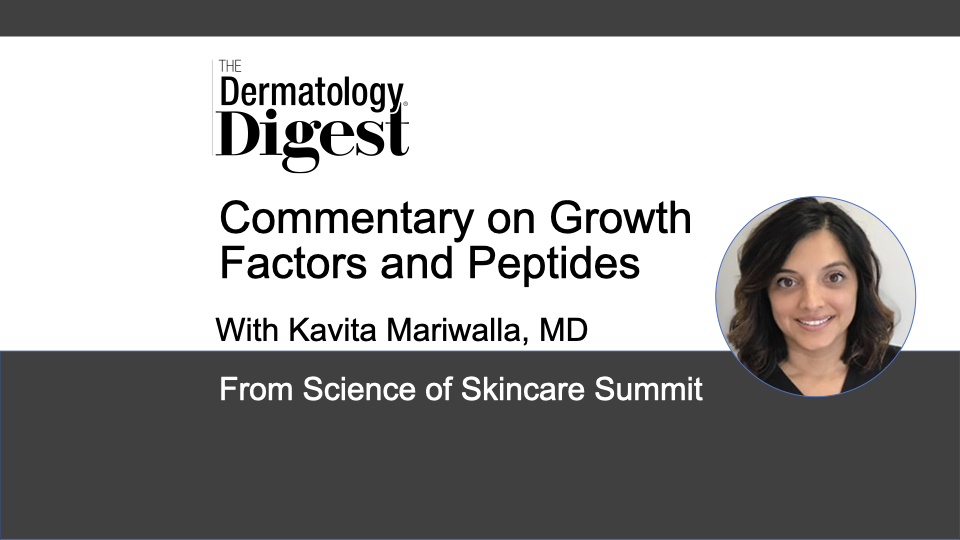Dr. Kavita Mariwalla discusses peptides in skincare formulations, including variability, potential, and claims.
Kavita Mariwalla, MD, Double Board-Certified Dermatologist, Mariwalla Dermatology, West Islip, New York
“Peptides are a cute phrase that everybody’s using for skincare now, but all peptides are not the same,” said Kavita Mariwalla, MD, who presented “Growth Factors and Peptides” at the 2022 Science of Skincare Summit.
“Some peptides are simply carrier peptides, in which case they’re not doing a whole lot more than helping other ingredients get into the skin. The ones you do want to really lean into are signaling peptides because those could potentially actually do what formulations claim.”
In general, many over-the-counter products do not have clinical data to support their claims, said Dr. Mariwalla.
“So you can say, ‘Oh, this has peptide in it,’ but you don’t really know how much is in there. And we don’t really know how much is needed in terms of concentration for different serums versus creams versus lotions or gels to actually create the downstream effect that they promise.”
Signal peptides have the potential to generate a biologic response and make the most sense scientifically, but do not come with a guarantee, she said.
“So whenever I hear the word peptide, it really is to me sort of like a promise that is yet to be fulfilled. But again, like anything, you’re not really sure what the concentration of it is and the formula and if they’re clinically effective.”
The peptide story is still being written, so don’t take peptides and growth factors at face value, said Dr. Mariwalla.
“For example, if you have a cream and you’re like, ‘Oh, it’s got peptides and growth factors in it.’ Well, what does that mean? And again, like I said, a lot of the over-the-counters don’t have any clinical on it, so you don’t know what the end effect is.”
It can be challenging to fully understand what the specific peptides are in products, especially when they are referred to as “proprietary blends,” said Dr. Mariwalla.
“So my advice is the following: Number one, if you’re thinking of selling something as a cosmeceutical in your practice, have the rep come in and actually tell you what the peptides are.”
This will allow you to be able to discern whether they are carrier or signaling peptides and if the product has the potential to deliver on its claim, she said.
“If they say, “Well, it’s a proprietary blend,” ask for clinical before and afters. You want to make sure that it’s been used for 8 to 12 weeks.”
Any skin changes seen prior to that time period are likely attributed to other ingredients, for example the moisturizer, in the formula, said Dr. Mariwalla.
“I recently got a media kit for a company that was selling a peptide serum over the counter. And even on the box you can’t tell what the peptides are. It’s only when you go onto the website and then look at the ingredient list then you start to see what the peptides [are] that they’re talking about.”
In many cases, companies who purchase peptide formulas from contract manufacturers have no idea what peptides they’re getting yet still make skincare claims, said Dr. Mariwalla.
“So to me peptides and growth factors are probably the biggest claim in dermatology right now that have yet to be proven.”


